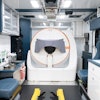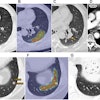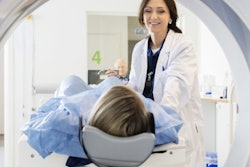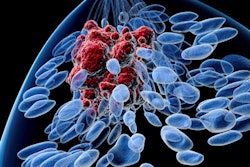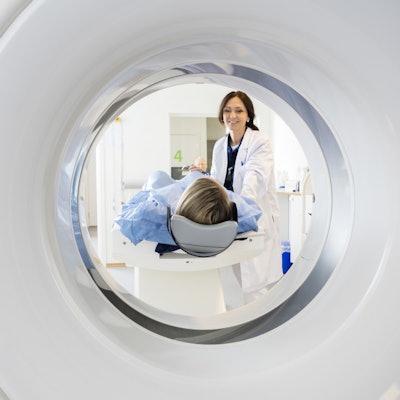
Preoperative contrast-enhanced conebeam breast CT (CE-CBBCT) is more accurate than MRI in assessing residual breast tumors after breast cancer treatment, findings published January 6 in Academic Radiology suggest.
A team led by Dr. Yafei Wang from Tianjin Medical University Cancer Institute & Hospital also reported that CE-CBBCT is comparable to breast MRI when it comes to predicting complete pathologic response.
"CE-CBBCT could be an alternative method used for residual tumor assessment after neoadjuvant chemotherapy and benefit patients who have contraindications for breast MRI," the Wang team wrote.
Radiologists have highlighted breast MRI's high accuracy in evaluating and predicting the effectiveness of neoadjuvant chemotherapy. However, the researchers pointed out MRI's high cost and time consumption, as well as its struggles to image calcifications. For the latter point, calcifications may be the main indication of DCIS and has ties to local recurrence, according to the researchers.
CE-CBBCT has shown promise in recent years, with Wang and colleagues writing that it "combines parts of superiority of mammography and MRI" and shows "excellent" performance in clinical applications. Previous studies also highlight this method's shorter imaging acquisition time over MRI.
However, they also noted a lack of data on how accurate CE-CBBCT is in evaluating residual tumors. For this study, they wanted to compare the accuracy of this modality and breast MRI in assessing residual tumors, as well as assess their performances for predicting pathological complete response.
The researchers looked at residual tumor data collected from 91 women after chemotherapy. They found that CE-CBBCT had good agreement with pathology compared with the moderate agreement seen with MRI. Also, CE-CBBCT had lower overestimation rates than MRI and showed less deviation with pathologic results in subtype analysis.
| Performance for assessing residual breast tumors | ||
| MRI | CE-CBBCT | |
| Agreement with pathology (intraclass correlation coefficient) | 0.59 | 0.64 |
| Overestimation (interquartile range [IQR]) | 0.67 cm | 0.24 cm |
| Accuracy in assessing residual DCIS (IQR) | 1.20 cm | 0.33 cm |
| Accuracy in assessing residual calcifications contained (IQR) | 1.55 cm | 1.23 cm |
| Accuracy in assessing luminal A breast cancer (IQR) | 0.08 cm | -0.02 cm |
| Accuracy in assessing luminal B breast cancer (IQR) | 0.64 cm | 0.26 cm |
The researchers also found that CE-CBBCT was on par with MRI in predicting complete pathologic response, with areas under the curve (AUC) of 0.749 and 0.733 respectively between the two methods (p > 0.05).
Finally, the team found that interobserver agreements among radiologists for CE-CBBCT features ranged from 0.62 to 0.89, compared with the 0.67-to-0.71 agreement range for MRI. Agreements for measurements meanwhile for both modalities were "excellent," with intraclass correlation coefficient (ICC) values of 0.98 for CE-CBBCT and 0.97 for MRI.
A multicenter screening trial is underway to confirm their current findings in a larger cohort, according to the researchers.




